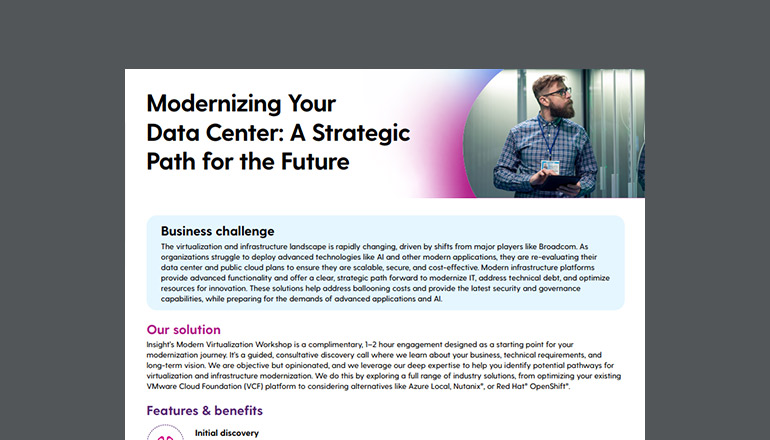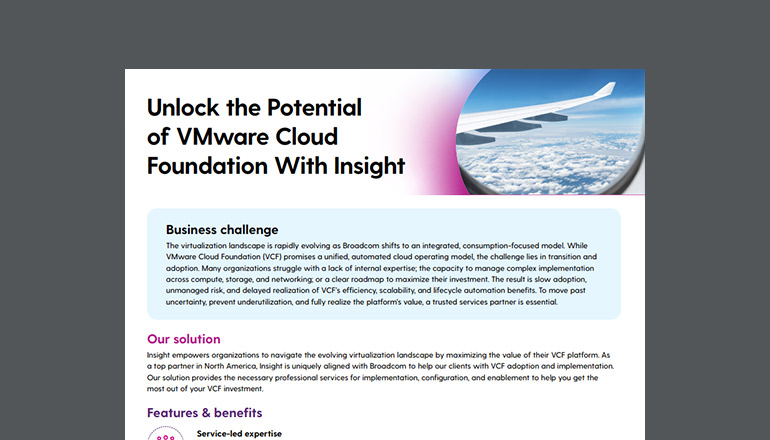Article How Managed IT Services Increase IT Efficiency, Boost Productivity
Outsourcing IT services can drive profitability for the business.
By Lana Gates / 19 Oct 2020 / Topics: IT optimization Managed workplace

IT is becoming a profit center for business, a key contributor to the bottom line. Despite that, budgets are continually shifting, and Chief Financial Officers (CFOs) are being asked to free funds.
The practice of freeing funds is not isolated to cutting costs, though. It can also mean optimizing costs and values. At the beginning of the year, before the pandemic hit, the majority (59%) of IT leaders expected their IT budgets to increase this year, according to IDG. Since the rise of COVID-19, however, 71% of IT decision-makers have concentrated on reigning in operational costs, and 62% are focused on cutting external spend, reports Everest Group (See Figure 1).

In fact, although “overall IT budgets are expected to decline slightly year over year in 2021,” according to Spiceworks Ziff Davis, “The 2021 State of IT,” a whopping 80% of businesses still expect to spend the same amount or more on technology. With business revenues anticipated to decrease between 2020 and 2021, the need to reign in costs is paramount.
One of the best ways to do that is through outsourcing. Traditionally, as much as 70% of the IT budget has been allotted to keeping business-critical technology systems up and running, according to Deloitte’s “Tech Trends 2019” report. Working with a partner to offset those costs can result in savings of 25% to 45%, according to Mordor Intelligence. In addition, managed services can increase operational efficiency by 45% to 65%.
Debunking managed services myths
Contrary to popular belief, partnering with a Managed Service Provider (MSP) doesn’t mean replacing your internal IT team. Rather, a managed IT service provider is supplemental, working with you to gather data and evaluate your needs. With that information, the partner is equipped to determine the most cost-effective approach to optimize your IT efforts and costs.
From there, the MSP creates a roadmap that details how to effectively take your business from its current IT state to the desired end state. The roadmap includes a timeline and costs involved. Support is a key feature every step of the way, including continuous improvement, data analytics, ongoing transformation and knowledge management.
How managed services help
Managed IT services can include everything from cloud and website hosting to storage, device lifecycle management, security, help desk, networking and more. What makes these services attractive is their ability to:
- Decrease support costs.
- Provide higher return on investment.
- Reclaim IT resources for business-critical projects.
- Improve service levels and end-user support.
- Ensure IT governance and scalability.
In addition, outsourcing IT services can bolster your team with skills unavailable in-house, free internal workers to spend time on innovation and facilitate worker productivity across the business.
For example, a national healthcare provider found they could save a projected $600,000 annually by handing their device management to Insight for their 35,000+ devices. In setting up this managed service, Insight was also able to regulate the client’s documentation process and inventory control. Read the full details of the case study here.
How to get started
If you’re ready to embrace a managed service provider, it’s important you find the right IT partner for your business. They’re not all created equal. Some have strengths in certain areas where others are weak. Some can cover all IT aspects whereas others only specialize in a few. Do your research to ensure a good fit.
Insight offers a risk-free Workplace Services Assessment to help you determine the best IT approach for your business. It’s time to maximize your budgets and increase cash flow liquidity.






